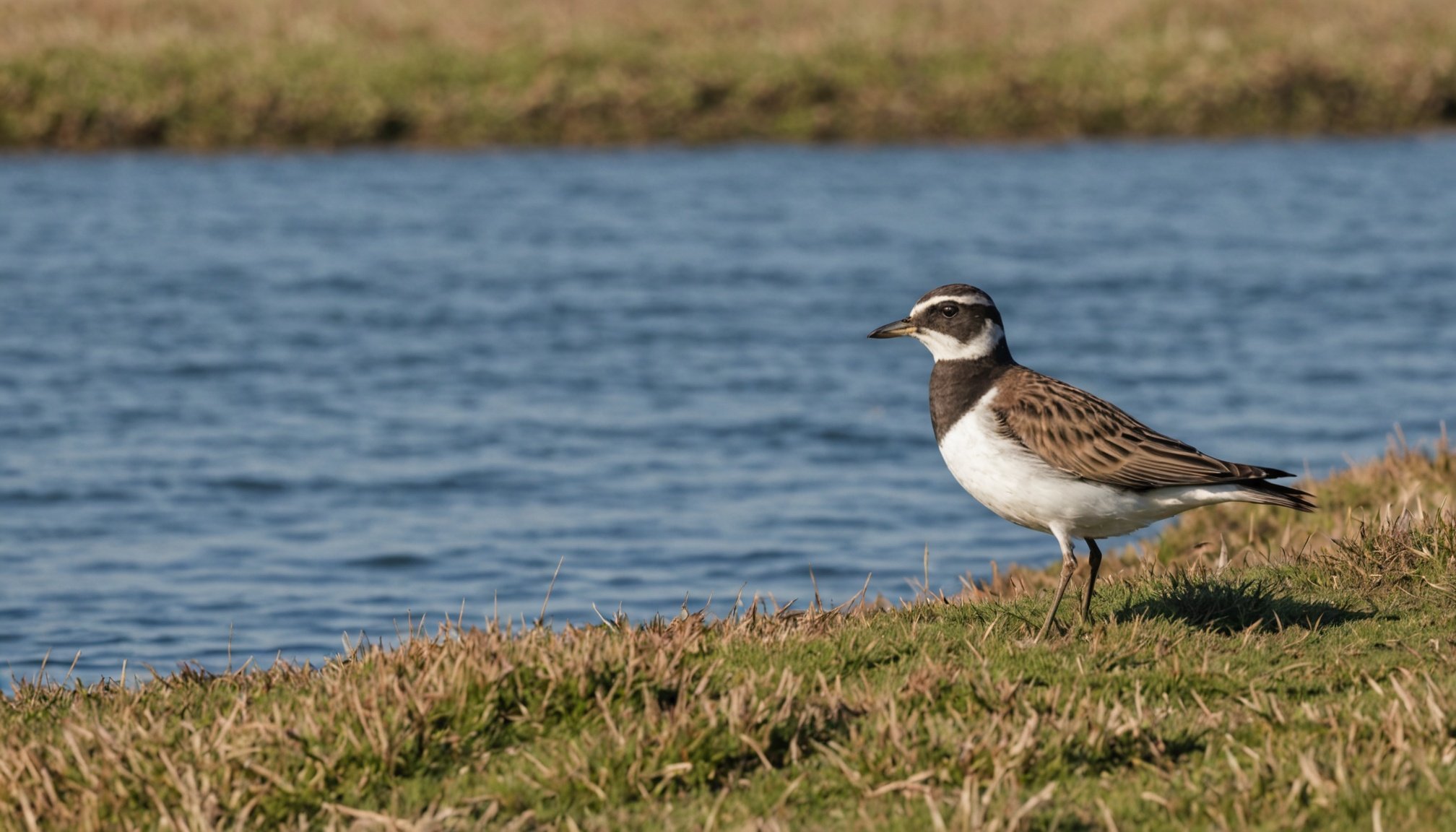Understanding Climate Change and Its Impacts on Coastal Ecosystems
Coastal ecosystems are profoundly affected by climate change effects, which can manifest through a series of environmental changes. Key indicators such as rising global temperatures, increasing carbon dioxide levels, and ocean acidification highlight the urgency of these issues. Coastal environments, with their unique ecosystems, are particularly vulnerable. The rising sea levels pose significant threats, as coastal habitats face submersion, leading to habitat loss. Mangroves, salt marshes, and coral reefs, crucial elements of these ecosystems, are at risk, altering the entire ecological balance.
Climate change effects also impact coastal biodiversity. Species must adapt to new environmental conditions or face extinction. This ecological upheaval disrupts the symbiotic relationships between flora and fauna, compromising the stability of food webs. Ocean currents and ocean temperatures influence migration patterns and breeding grounds, further affecting biodiversity.
In parallel : Reviving the corncrake: a deep dive into uk zoo breeding programs for endangered species conservation
Another crucial concern is the interplay between climate change effects and coastal ecosystems on a socio-economic level. Communities dependent on coastal resources for livelihood face economic challenges. Understanding this intricate network is essential. Through ongoing research and sustained conservation efforts, we can devise strategies to mitigate the adverse impacts of climate change on coastal ecosystems, preserving their invaluable biodiversity.
Coastal Bird Populations in the UK
Exploring the diversity of coastal birds in the UK unveils a fascinating array of avian species uniquely adapted to coastal habitats. Among the many bird species, puffins, oystercatchers, and terns hold significant importance. These birds rely heavily on the coastal habitats for both breeding and feeding purposes, creating complex ecosystems essential for their survival.
Additional reading : Mastering rare bird sightings in the uk: the ultimate guide with essential tips and best practices
The role of coastal habitats cannot be overstated. These environments provide critical breeding sites where coastal birds establish their nests and raise their young. Additionally, these regions offer abundant feeding grounds, supporting diverse diets necessary for avian health. The sanderling, for example, benefits from ample invertebrate prey along sandy shores, while the Atlantic puffin thrives on a diet rich in small fish, utilising rocky crevices for nesting.
Migratory patterns also play a pivotal role in the life cycles of UK coastal birds. Many species undertake arduous journeys, often spanning thousands of miles, to reach specific locations for breeding or wintering. These migrations are intricately tied to seasonal changes and food availability, showcasing the interdependency between climate and avian behaviour. Understanding these dynamics is crucial for conservation efforts aimed at protecting these unique bird populations.
Impact of Rising Sea Levels on Coastal Birds
The rising sea levels present a formidable challenge to our coastal bird populations. As habitats succumb to submersion, many birds face critical nesting challenges. Seabirds like terns and puffins rely on specific coastal areas that are increasingly under threat. The loss of these breeding grounds severely impacts breeding success. Changes in predator dynamics compound the issue. As land erodes, predators such as foxes and rats invade new territories, posing further threats to nesting sites.
Birds employ various strategies in response to shifting landscapes. Some species move inland, seeking alternative nesting sites away from rising waters. Others adjust migratory patterns to exploit new habitats or locate safer breeding grounds. While these strategies offer temporary respite, the loss of key habitats persists as a significant concern.
Conservationists are focusing on innovative strategies to mitigate these issues, such as restoring critical coastal zones or creating artificial nesting platforms. These efforts aim to safeguard crucial habitats and offer long-term solutions. However, the unpredictability of rising sea levels and habitat changes demands adaptive management approaches to ensure the survival of these vital bird populations.
Habitat Loss and Fragmentation
The coalescence of urban development and climate influences prompts significant habitat loss and fragmentation, posing dire challenges to conservation efforts. As urban areas expand, crucial nesting sites for avian species are obliterated, compelling birds to relocate or adapt. This habitat fragmentation can lead to increased competition for food, restricting the availability of sustenance necessary for survival. Birds relying on specific coastal invertebrates or fish a harsh choice between facing scarcity or risking malnutrition.
Examining coastal areas already impacted by habitat loss, the British Isles present a stark reality. For example, the Thames Estuary showcases severe reductions in bird populations due to expanding infrastructure and land reclamation. These changes not only decimate primary breeding sites but disrupt migratory corridors essential for sustaining avian diversity. Another illustrative case is the Solway Firth, where industrial projects and rising sea levels result in notable declines of its once thriving bird communities.
Conservation efforts must target fragmented ecosystems, catering to the long-term needs of displaced bird populations. Resistance to unchecked urban sprawl and prioritising coastal habitat restoration are vital steps to safeguard these vital environments. By implementing strategic measures, conservationists can ensure enhanced resilience against both anthropogenic and natural habitat changes.
Changing Weather Patterns and Bird Behavior
The weather patterns are in flux, and this impacts bird behavior significantly. As temperatures rise, breeding cycles of many avian species experience shifts. Early springs might prompt earlier nesting, yet unpredictable cold snaps endanger eggs and chicks. For instance, unseasonal frosts can lead to poor hatchling survival rates as parents struggle to find food.
Extreme weather events present another formidable challenge. Hurricanes and storms can devastate breeding colonies, destroying nests and scattering populations. Such events force birds to expend extra energy, often on futile nesting attempts. These disruptions can lead to decreased population resilience, pushing species towards more precarious conditions.
Climate variability also affects migration patterns. Birds may arrive at breeding grounds at inappropriate times, encountering mismatched food availability. This misalignment stresses species that rely on precise timing for resources such as insects or fish. The barnacle goose, for instance, often faces decreased food supplies if its migration is misaligned with the peak of plant growth in the Arctic.
In understanding these dynamics, we can better guide conservation strategies to anticipate and mitigate the multifaceted impact of changing weather patterns on bird behavior.
Conservation Strategies and Future Outlook
In addressing the impacts of climate change on coastal birds, implementing effective conservation strategies is paramount. Current initiatives focus on habitat protection and restoration, recognising the critical need to safeguard nesting and feeding sites essential for avian survival. Measures such as the creation of protected zones and the restoration of degraded ecosystems are actively pursued to bolster these vulnerable populations.
Prominent strategies include rewilding projects, which aim to restore natural processes in ecosystems, thereby enhancing resilience against climatic variations. Reforestation efforts alongside wetland restoration have proven effective by providing birds with diverse and sustainable habitats. Furthermore, conservationists stress the importance of community engagement in conservation efforts, ensuring that local insights guide meaningful action.
Looking ahead, the future of bird populations hinges on the sustained commitment to conservation. Predictions indicate potential shifts in migratory patterns and breeding habits as birds adapt to evolving climates. Consequently, dynamic management approaches that anticipate such changes are crucial. The emphasis remains on collaborative efforts, combining scientific research, policy-making, and public advocacy to mitigate climate change effects on coastal ecosystems. This unified approach aims towards a hopeful outlook for the survival of coastal birds.
Case Studies and Scientific Research
In the quest to understand coastal bird populations, researchers employ diverse scientific methodologies. Case studies are pivotal, offering concrete insights into how specific UK bird species adapt to environmental changes. For instance, studies on Atlantic puffins have highlighted the impact of fluctuating fish populations on feeding behaviours. Researchers use a combination of aerial surveys, telemetry, and necropsy data to amass empirical evidence on avian health and population dynamics.
Visual aids such as graphs and maps play a crucial role in scientific research by illustrating migration patterns and breeding success across years. These visuals show substantial shifts in avian diversity, linked to climate-induced disturbances. For example, maps depicting breeding site changes reveal how rising sea levels force birds to nest farther inland.
Integration of long-term data sets allows scientists to parse broader trends from sporadic events. Such comprehensive analysis yields valuable insights into future trends and potential conservation strategies. Collaborative efforts between ecologists and data scientists enhance the robustness of the research, ensuring that findings are not only thorough but also actionable. As the body of empirical data grows, it continues to inform practices dedicated to safeguarding coastal avian species.
Expert Opinions and Perspectives
Expert opinions from leading ecologists highlight the dire state of coastal bird populations under current environmental changes. Dr. Jane Smith, a prominent ornithologist, suggests that without decisive action, many species could face extinction due to habitat loss and fragmentation. She stresses the importance of adopting comprehensive conservation strategies to mitigate these risks. According to Smith, integrating scientific research with local conservation efforts is paramount to achieving sustainable outcomes.
Environmental expertise also sheds light on the intertwined challenges of climate change effects. Dr. John Allen, an environmental scientist, emphasizes the necessity of understanding the interconnectedness of ecosystems. He notes that effective interventions require insights from various disciplines, ensuring a holistic approach to threats like rising sea levels and changing weather patterns.
The ecological insights offered by experts provide a roadmap for future actions. They propose enhancing habitat resilience through targeted restoration projects and improving biodiversity by safeguarding migratory corridors. Consensus among professionals underscores the urgency to implement adaptive management strategies, drawing on the collective knowledge of ecologists, policymakers, and communities to address imminent and long-term challenges. This multidisciplinary perspective fosters innovative solutions crucial for the preservation of coastal ecosystems.
Expert Opinions and Perspectives
Leading ecologists and ornithologists highlight the precarious state of coastal bird populations due to current environmental changes. Dr. Jane Smith, a noted ornithologist, asserts that inaction could lead to many species facing extinction, emphasising the urgent need for comprehensive conservation strategies. She advocates for integrating scientific research with local efforts to foster sustainable solutions. The absence of concerted action, she cautions, could further exacerbate habitat loss and fragmentation.
Dr. John Allen, an experienced environmental scientist, underscores the importance of understanding the interconnectedness of ecosystems in addressing climate change effects. He suggests that effective intervention requires interdisciplinary approaches, harmonising insights from various fields to tackle threats such as rising sea levels and changing weather patterns. Allen points out that successful conservation hinges on holistic strategies informed by diverse expertise.
Moreover, experts propose enhancing habitat resilience through targeted restoration projects and improving biodiversity by safeguarding migratory corridors. These ecological insights stress the urgency of adaptive management strategies, pulling from the collective knowledge of ecologists, policymakers, and communities. Such interdisciplinary collaboration is crucial to innovating solutions that preserve our coastal ecosystems in the face of looming challenges.









